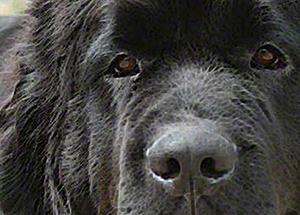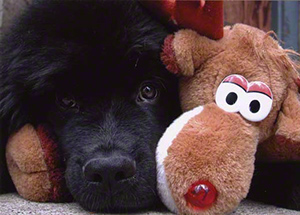The arrival of a new puppy is an exciting event, and the inevitable change in household routine will go much smoother if you’re well-prepared for the arrival of your Newfoundland newcomer. The following items and discussions should help you to get ready – or, if your puppy is already at home, to make sure you’ve covered all the bases. (If you’re not new to dog ownership, some of what’s discussed below will be familiar, but please read through the list anyway, as many of its suggestions are Newf specific. Newfoundlands’ size and breed characteristics mea n that what works for a Lab or a boxer won’t necessarily fill the bill now, or at least not when your new member of the family is full-grown.)
TRANSPORTATION
A Newfoundland puppy will easily fit in any vehicle, but a full-grown Newf is another story. Give some thought – preferably before you decide to get a Newf – to transportation. This is a personal decision with significant lifestyle and financial implications, of course, but let’s just say there’s a very good reason why many Newf owners, especially those with multiple Newfs and an interest in dog-related activities, drive SUVs and vans. You don’t need one to own a Newf – though it certainly doesn’t hurt – but you will need to make necessary accommodations otherwise. (Should you find yourself in the market for a new vehicle in which you hope to transport your Newf, do what many experienced Newf owners do: go car shopping with a tape measure to ensure your crates will fit.) Regardless of your vehicle, give some thought to protection. Protection for your vehicle can take the form of towels, blankets, or custom padding or lining for seats and floors (available from various catalogs and online retailers); protection for your Newf should take the form of a crate (hence the SUVs and vans at Newfie gatherings) or a harness restraint system. Most knowledgeable owners insist on some sort of restraint system for the safety of their dog.
Prep a pet-friendly travel kit. Bring food, a bowl, leash, a waste scoop, plastic bags, grooming supplies, medication and first-aid, and any travel documents. Pack a favorite toy or pillow to give your pet a sense of familiarity. Be sure to pack plenty of water, and avoid feeding your pet in a moving vehicle. Your pet's travel-feeding schedule should start with a light meal three to four hours prior to departure, and always opt for bottled water or water brought from home. Drinking water from an area he or she isn’t used to could result in stomach discomfort.

